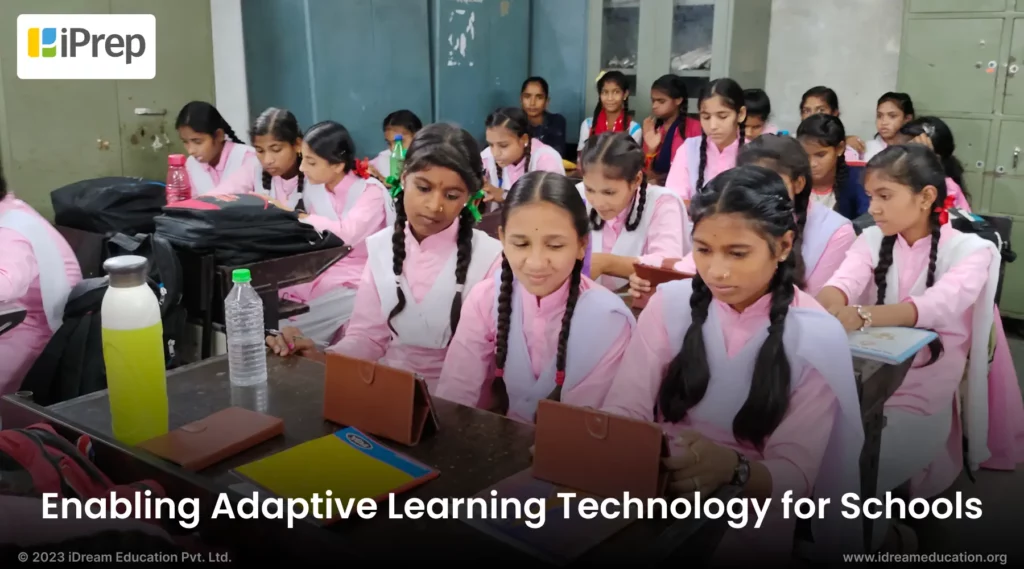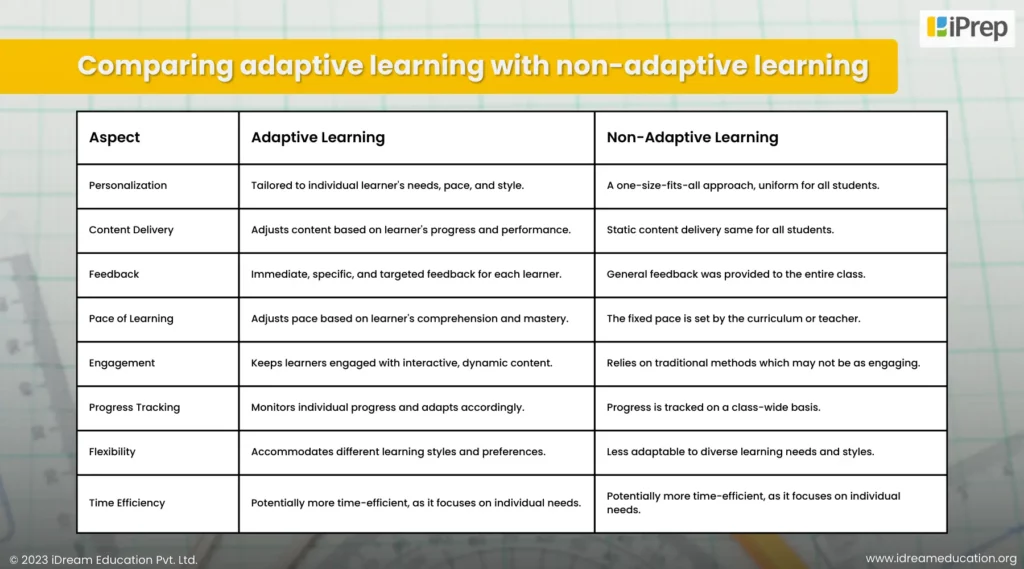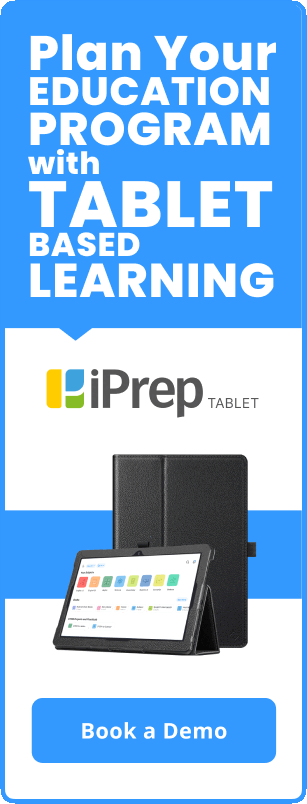Enabling Adaptive Learning Technology for Schools

Personalized adaptive learning technology for schools signals a shift in the delivery of education by using technology to tailor each student’s learning experience. Adaptive learning, in contrast to traditional one-size-fits-all teaching strategies, customizes the content, pace, and resources to each student’s needs. This cutting-edge technology enables teachers to give tailored help that promotes greater understanding and more significant learning outcomes by leveraging data-driven insights. This blog will explore the use of adaptive learning technology for schools, what it is, and how it benefits both teachers and students.
But before we delve into the things mentioned let’s first talk about the importance of personalized education
Tailoring instruction to each student’s unique learning style, pace, and capabilities is essential, particularly when using personalised adaptive learning technologies for schools. This customized method acknowledges that every person processes information differently and at a different rate. Utilizing data analytics, adaptive learning technology makes sure that students are presented with tasks and content that are appropriate for their level of skill. This maximizes comprehension and engagement while also avoiding boredom or irritation. Furthermore, a joy of learning and a sense of ownership over one’s educational path is fostered by personalized education. It makes it possible for teachers to pinpoint problem areas and take action on them, which results in more significant academic advancement. In the end, adaptive learning technology for schools that provides individualized instruction gives students the abilities, information, and self-assurance they need to thrive in a constantly changing educational environment and beyond.
Now let us understand what exactly is adaptive learning technology in the next section.
What exactly is adaptive learning technology?
Specifically speaking, adaptive learning technology for schools refers to a method of teaching that uses technology to tailor each student’s learning experience. This approach acknowledges that every student has different learning preferences, strong points, and room for development. Adaptive learning technology uses data-driven evaluations to customize resources and curricula to meet the unique requirements of individual students. By tailoring the information to each student’s level of ability, this individualized approach maximizes comprehension and engagement.
With the use of tools that enable teachers to effectively handle a wide range of learning capacities, adaptive learning technology takes the traditional teaching approaches to a whole new level. It encourages a deeper comprehension of the courses and improves overall academic achievement by giving students the confidence to participate actively in their education. Adaptive learning technology for schools can greatly improve the efficacy and calibre of instruction for all students and teachers in schools. To further grasp the idea of adaptive learning technology for schools, let’s look at an example.
An example of adaptive learning technology
A personalized adaptive learning platform such as iPrep PAL where PAL stands for personalized adaptive learning is an illustration of adaptive learning technology for schools. Through tests and interactive exercises, this iPrep PAL platform evaluates the strengths, limitations, and learning preferences of each learner. It adjusts the curriculum and tempo of instruction to meet the needs of each student based on this data.
For example, if a student is doing well in a certain area, the platform can provide more difficult content or enrichment possibilities. Moreover, the iPrep PAL platform can provide practice, focused tasks, and educational videos to enhance knowledge if a student is facing trouble with a particular topic.
Additionally, the platform is always changing in response to the student’s progress, making sure they are always provided with the appropriate amount of challenge and assistance. With the aid of this kind of personalised adaptive learning technology, schools can better match the educational needs of their students and make the most of their learning potential. Students’ learning outcomes can be positively impacted when they receive tailored, on-demand support.
Now that we have understood the concept of adaptive learning for schools with the help of an example, let now compare adaptive learning with non-adaptive learning in the next section.
Comparing adaptive learning with non-adaptive learning

| Aspect | Adaptive Learning | Non-Adaptive Learning |
| Personalization | Tailored to individual learner’s needs, pace, and style. | A one-size-fits-all approach, uniform for all students. |
| Content Delivery | Adjusts content based on the learner’s progress and performance. | Static content delivery – same for all students. |
| Feedback | Immediate, specific, and targeted feedback or remedial content & practice for each learner. | General feedback was provided to the entire class or every student. |
| The Pace of Learning | Adjusts pace based on the learner’s comprehension and mastery. | A fixed pace is set by the curriculum or teacher. |
| Engagement | Keeps learners engaged with interactive, dynamic content. | Relies on traditional methods which may not be as engaging. |
| Progress Tracking | Monitors individual progress and adapts accordingly. | Progress is tracked on a class-wide basis. |
| Flexibility | Accommodates different learning styles and preferences. | Less adaptable to diverse learning needs and styles. |
| Time Efficiency | Potentially more time-efficient, as it focuses on individual needs and learning outcomes. | Potentially less time-efficient, as it does not focus on individual needs and learning outcomes. |
It’s important to note that both adaptive and non-adaptive learning approaches have their own strengths and can complement each other in an educational setting. Adaptive learning technology for schools aims to enhance the learning experience by providing personalized support, while non-adaptive methods offer structure and consistency across a broader group of learners.
How does adaptive learning technology for schools help?
Help For Teachers
Teachers can improve the quality of education by using the crucial tools provided by adaptive learning technology for schools. Personalised adaptive learning technologies help teachers effectively tailor training by giving them access to real-time data on each student’s progress, areas of strength, and areas that require work. By using a focused approach, teachers may cater to each student’s unique learning style and pace, making sure that no student falls behind. Teachers may access a multitude of resources using adaptive learning technology, such as customized exercises, evaluations, and content.
This saves them time developing curricula and lets them concentrate on improving their teaching techniques. Additionally, the technology helps to continuously enhance instructional techniques by providing insights into the teaching strategies that work best for individual students.
Furthermore, by empowering teachers to exchange best practices and use data-driven insights to enhance each student’s learning experience in the classroom, adaptive learning technology for schools promotes collaboration among teachers.
Help For Students
Giving students individualized, customized support, and personalised adaptive learning technology for schools enhances the learning environment. This system evaluates each student’s unique strengths, limitations, and learning preferences by utilizing sophisticated algorithms and data analytics, enabling a personalized approach to instruction. This helps ensure that students are neither overburdened nor under-challenged since the material and training they receive are exactly matched to their needs and skills.
The technology also provides focused support in areas where students might be having difficulty by providing extra materials, practice, and feedback. This boosts drive and confidence in addition to improving understanding. By providing increasingly difficult content, adaptive learning technology for schools helps advanced students improve more quickly and avoid disengagement.
Students may track their progress and receive immediate guidance with continuous assessment and real-time feedback, which encourages a proactive attitude to learning and a sense of accomplishment. Essentially, adaptive learning technology for schools maximizes students’ potential and sets them up for success in learning throughout their lives by providing them with a dynamic and tailored educational experience.
Now that we know how adaptive learning for schools helps teachers and students, let’s see how these can be implemented in schools.
How to implement adaptive learning technology for schools.
In order to successfully integrate adaptive learning technology for schools, schools must follow a number of crucial measures. First and foremost, in order to comprehend the particular needs and obstacles the school will experience throughout implementation, a comprehensive needs assessment is required. This entails analyzing the existing curriculum, figuring out how adaptive learning technology can improve learning objectives, and gauging the state of the technical infrastructure.
The school should then decide on an appropriate adaptive learning platform that fits within its budget and is in line with its curriculum and pedagogical objectives. Features such as tests, real-time progress tracking, and individualized learning pathways should be available on this platform. All these features are available on platforms such as iPrep PAL that offer personalised adaptive learning. Selecting a system that is easy to use for teachers and learners alike is crucial, and sufficient training should be offered to guarantee efficient implementation.
Educator preparation and career advancement are essential to the effective integration of adaptive learning technology in school. Instructors must be trained on the platform’s efficient use, how to analyze the data it produces, and how to incorporate it into their lesson plans. Teachers should have access to materials and ongoing support to help them improve how they use technology on a constant basis.
It is crucial to continuously & periodically analyze and evaluate how adaptive learning technology for schools affects student outcomes. This entails examining the data produced by the platform to monitor the development of each individual student, spot areas in need of improvement, and modify teaching tactics as necessary. Obtaining input from teachers, learners, and guardians will also aid in improving the execution procedure and resolving any obstacles.
How iPrep PAL Offers Adaptive Learning for Schools
iPrep PAL offers personalised adaptive learning for schools through its personalized learning platform. The platform utilizes advanced algorithms and data analytics to assess each student’s individual strengths, weaknesses, and learning styles. Based on this information, iPrep PAL tailors the learning content and pace of instruction to suit each student’s needs, ensuring they receive a customized educational experience.
For example, if a student excels in a particular subject, iPrep PAL provides more challenging material or opportunities for enrichment. Alternatively, if a student struggles with certain concepts, and in other words if the students have some learning gaps the platform offers foundational levels, additional practice, targeted exercises, and instructional videos to reinforce their understanding.
Furthermore, iPrep PAL continuously adapts based on the student’s progress, providing just-in-time support to maximize their learning potential. This adaptive approach helps students stay engaged with interactive, dynamic content and receive immediate feedback.
By offering this level of personalization, iPrep PAL empowers students to take an active role in their education and fosters a deeper understanding of subjects. Additionally, iPrep PAL provides teachers with valuable tools to enhance their instructional practices, as they can access real-time data on each student’s progress and utilize a wealth of tailored resources. Overall, iPrep’s adaptive learning technology for schools aims to provide a dynamic and personalized educational experience, ultimately maximizing each student’s potential for success.
Conclusion
To sum up, adaptive learning technology for schools is viewed as a paradigm change in the field of education. Teachers can now offer individualized learning experiences that cater to the specific requirements and learning preferences of each student by utilizing technology. This creative method not only increases understanding and engagement but also gives the learning process a feeling of confidence and ownership.
It is impossible to overestimate the importance of individualized education, particularly in light of adaptive learning technologies for schools. Train instructors on efficiently using the platform, analyzing the data it produces, and incorporating it into their lesson plans. By enabling students to go at their own speed, this method gives them the information and abilities necessary to succeed in an evolving educational environment.
Adaptive learning technologies, like those found on platforms such as iPrep PAL, demonstrate an individualized approach. By adjusting curriculum and training to each student’s unique requirements, iPrep PAL offers a personalized learning environment. This dynamic adaptation maximizes students’ learning capacity by ensuring that it neither overly challenges them nor under-challenges them.
All things considered, the adoption of adaptive learning technology for schools is a huge step in the direction of a more successful, inclusive, and engaging educational process. The future is brighter for students, teachers, and the educational system as a whole if we embrace this shift in the way we teach.







